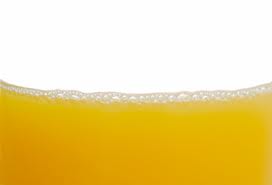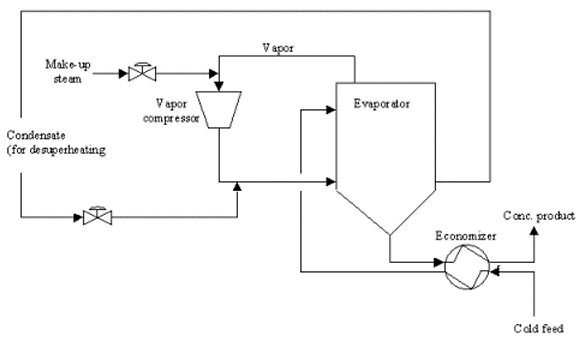Chemical and Process Engineering Resources

Food Industry
Evaporating fruit and vegetable juices presents a special challenge for chemical engineers. Juices are heat sensitive and their viscosities increase significantly as they are concentrated. Small solids in the juices tend to cling to the heat transfer surface thus causing spoilage and burning.
Juice evaporations are usually performed in a vacuum to reduce boiling temperatures (due to heat sensitivity). High flow circulation rates help avoid build-ups on the tube walls.
For some juices (e.g. orange), it is unavoidalbe that the flavor changes as concentration increases. Some of the volatile, flavor-containing components are lost during evaporation. In this case, some of the raw juice is mixed with the concentrate to replace the lost flavors.
Considering that the components of juices have close boiling points, a standard, single evaporator is seldom sufficient. Either a multi-effect evaporation system must be used (lower capital cost, higher energy costs) or a vapor recompression evaporator (higher capital cost, lower energy costs) is employed. In a multi-effect system, the pressure is incrementally lowered in each stage, thus pushing the boiling point lower gradually. This permits more control over the vapor products to be discarded from the system (mainly water) and the vapors to be condensed back into the system (volatile juice components).
The vapor recompression evaporator was designed for maximum efficiency.  These units generally operate at low optimum temperature differences of 5-10 °C.  This requires a larger heat transfer area than multi-effect evaporators, thus the larger capital costs. However, the energy savings, generally make vapor recompression the evaporator of choice in the food industry.
 |
| Figure 2: Typical Vapor Recompression Evaporator Arrangement |
References:
Geankoplis, Christie J., Transport Processes and Unit Operations, 3rd Ed., Prentice Hall, 1993, ISBN 0139304398, pages 263-267Perry, Robert H., et al, Perry's Chemical Engineers' Handbook, 6th Ed., McGraw-Hill, 1984, ISBN 0070494797, pages 10-34 through 10-38
**Special thanks to Rossana Milie from the Department of Chemical Engineering, University of Pisa, Italy for supplying the idea for this article.

 FB
FB

4 Comments
Nice article, I am from Nestle. Last year we installed a five effect falling film evaporator. Great share.
Excellent article.
I'm student and haven't had any long time industry exposure till yet.
Actually I working in my thesis about citrus processing plant.
nice article, but main difficulty with FFE is maintaining wetting of tube otherwise heat transfer coefficient will also get affected